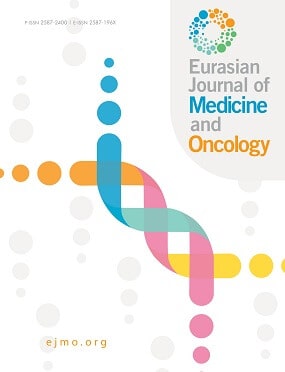

Epidemiology and Susceptibility Patterns of Hospital-Acquired Conjunctivitis in a Neonatal Intensive Care Unit
Halil Degirmencioglu1, Birgul Say1, Zuhal Ozen Tunay2, Sibel Saygan3, Serife Suna Oguz11Department of Neonatology, Zekai Tahir Burak Women’s Health Training and Research Hospital, Ankara, Turkey, 2Department of Ophtalmology, Zekai Tahir Burak Women’s Health Training and Research Hospital, Ankara, Turkey, 3Department of Microbiology, Zekai Tahir Burak Women’s Health Training and Research Hospital, Ankara, Turkey,
Objectives: The aims of this study were to determine the prevalence of pathogens causing bacterial hospital-acquired conjunctivitis (HAC) and to provide information about antibiotic susceptibility patterns among inpatient infants. Methods: Infants with gram-negative (Group 1) or -positive (Group 2) bacterial conjunctivitis were included. Of 365 patients, 98 tested positive for bacteria; all data were collected retrospectively. Isolated pathogens and antibiotic susceptibility patterns were also obtained from the patient records. Results: The most common pathogens were gram-negative bacteria, found in Group 1 (n=80, 82%). Group 2 included 18 (18%) infants with gram-positive conjunctivitis. There were no significant differences in demographics or clinical characteristics between the two groups. Ten neonates in Group 1 (12.5%) and two neonates in Group 2 (11.1%) had concomitant sepsis (p=0.60). In gram-positive conjunctivitis cases, Staphylococcus aureus (50%) was the predominant pathogen. In gram-negative conjunctivitis cases, Pseudomonas species (46.2%) was the most common pathogen, followed by Klebsiella species (27.5%) and Escherichia coli (12.5%). In gram-negative bacteria, the antibiotic resistance rates to gentamicin, netilmicin, and second- and third-generation fluoroquinolones were 48.1%, 14.3%, and 13% and 8.6%, respectively. We did not observe any unresponsive or complicated conjunctivitis cases. Conclusion: Surveillance is essential in determining the rate of HAC and identifying the factors associated with the infection, and it is important to plan and evaluate prevention strategies.
Cite This Article
Degirmencioglu H, Say B, Tunay Z, Saygan S, Oguz S. Epidemiology and Susceptibility Patterns of Hospital-Acquired Conjunctivitis in a Neonatal Intensive Care Unit. EJMO. 2017; 1(3): 155-159
Corresponding Author: Halil Degirmencioglu



